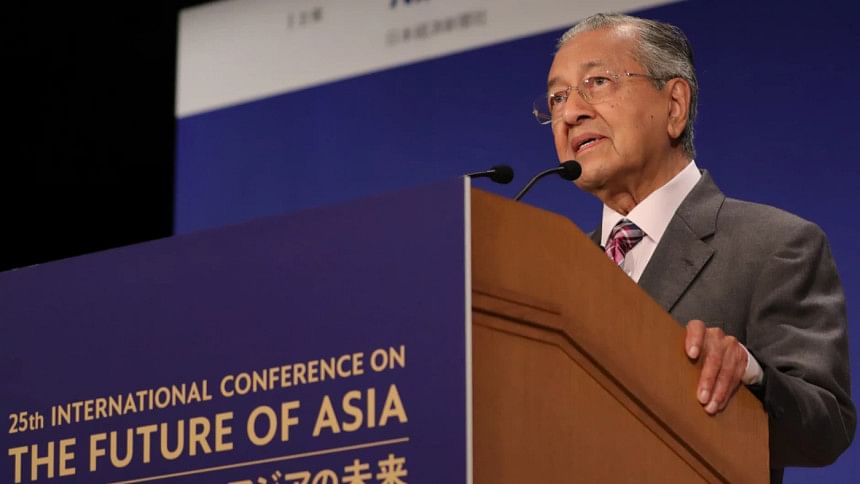Is the future truly Asian?

To Parag Khanna, author of The Future Is Asian, the answer is almost self-evident.
However, if you read his book carefully, you will find that he thinks global power will be shared between Asian and Western civilisations.
For the west, the rise of Asia has been frighteningly fast, because as late as 1960, most of Asia was poor, agricultural and rural, with an average income per capita of less than USD 1,000 in 2010 prices.
But 50 years on, Asia has become more urban and industrialised, and is becoming a challenge to the west in terms of trade, income and innovation.
McKinsey has just published a study on The Future Of Asia that highlights many aspects about why Asia is both attractive to businessmen and yet feared as a competitor.
Conventionally, excluding the Middle East and Iran, Asia is divided into North-east Asia (China, Japan and South Korea), South-east Asia (mostly Asean), South Asia (India, Pakistan, Bangladesh) and Central Asia.
But McKinsey has identified at least four Asias that are quite complementary to each other.
First, there is Advanced Asia, comprising Australia, Japan, New Zealand, South Korea and Singapore, each with per capita incomes exceeding USD 30,000, highly urbanised and rich, with a combined GDP that is 10 percent of global GDP.
This group provides technology, capital and market for the rest of Asia, but it is ageing fast.
Second, China is the world's largest trading economy, second largest in GDP after the US, and a growing consumer powerhouse. By 2030, the Chinese consumer market will be equal to Western Europe and the US combined.
China is also an increasing capital provider to the rest of the world.
Third, the 11 countries of Emerging Asia (Asean plus Bhutan and Nepal, excluding Singapore) have young populations, fast growth and cultural diversity.
Fourth, Frontier Asia and India—covering essentially South and Central Asia including Afghanistan—which have 1.8 billion in population, still rural but young.
Taken together, these four Asias today account for one-third of global GDP and 40 percent of the world's middle class. But what is remarkable is that while the region grew from trading with the rest of the world, intra-regional trade has grown faster, to 60 percent of total trade, with intra-regional foreign direct investment (FDI) at 66 percent of total inward FDI, and 74 percent of air traffic.
Much of Asian growth will come from rapid urbanisation, amid growing connectivity with each other. The top 20 cities in Asia will be mega conglomerates that are among the largest cities in the world with the fastest-growing income.
A major finding is that America First-style protectionism is helping to intensify the localisation and regionalisation of intra-regional connectivity in terms of trade, finance, knowledge and cultural networks. Furthermore, the traditional savings surpluses in Asia basically went to London and New York and were recycled back in terms of foreign direct investment and portfolio flows.
But no longer.
Increasingly, Asian financial centres are emerging to compete to re-pump surplus capital from Advanced Asia and China to fund the growth in Emerging and Frontier Asia.
In short, intra-regional finance is following intra-regional trade.
In a multi-polar world, no one wants to be completely dependent on any single player but prefers network connectivity to other cities and centres of activity and creativity.
As Khanna puts it: "The phrase 'China-led Asia' is thus no more acceptable to most Asians than the notion of a 'US-led West' is to Europeans."
But are such rosy growth prospects in Asia predestined or ordained?
Based on the trajectory of demographic growth of half the world's young population moving into middle income, the logical answer appears to be yes.
But there are at least three major bumps in that trajectory.
First, Asia, like the rest of the world, is highly vulnerable to global warming.
Large populations with faster growth mean more energy consumption, carbon emissions and natural resource degradation. Large chunks of Asia will be vulnerable to more water, food and energy stresses, as well as natural disasters (rising seas, forest fires, pandemics, typhoons etc).
Second, even though more Asians have been lifted out of poverty, domestic inequality of income and wealth has increased in the last 20 years.
Part of this is caused by rural-urban disparities, and widening gaps in high-value knowledge and skills. Without adequate social safety nets, healthcare and social security, dissatisfaction over youth unemployment, access to housing, and deafness to problems by bureaucracies has erupted in protests everywhere.
Third, geopolitical rivalry has meant that there will be tensions in diverse Asia over territorial, cultural and religious differences that can rapidly escalate into conflict. The region is beginning to spend more on armaments and defence, instead of focusing on alleviating poverty and addressing the common threat of climate change.
Two generational leaders from the west have approached these threats from very different angles.
Addressing the United Nations, Swedish schoolgirl Greta Thunberg dramatically shamed the older generation for its lack of action on climate change. "People are suffering. People are dying. Entire ecosystems are collapsing. We are at the beginning of a mass extinction and all you can talk about is money and fairy tales of eternal economic growth. How dare you," she said.
The young are idealistically appealing for unity in action against common fate.
In contrast, addressing the UN Security Council, US President Donald Trump was arguing the case for patriotism as a solution to global issues. Climate change was not mentioned at all.
Since the older generation created most of the carbon emissions in the first place, no wonder the young are asking why they are inheriting all the problems that the old deny.
This then is the difference in passion between generations.
Globalisation occurred because of increasing flows of trade, finance, data and people. That is not stoppable by patriot-protected borders.
A multi-polar Asia within a multi-polar world means that even America First, however strong, will have to work with everyone, despite differences in worldviews.
All patriots will have to remember that it is the richness of diversity that keeps the world in balance.
Andrew Sheng is an honorary adviser with the CIMB Asean Research Institute and a distinguished fellow with the Asia Global Institute at the University of Hong Kong. He writes on global issues for the Asia News Network (ANN), an alliance of 24 news media titles across the region.
This article is part of the latest series of the Asian Editors Circle, a weekly commentary by ANN editors published by members of the regional media group.

 For all latest news, follow The Daily Star's Google News channel.
For all latest news, follow The Daily Star's Google News channel. 



Comments